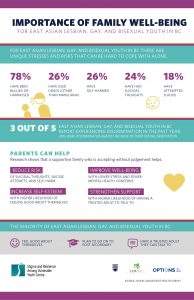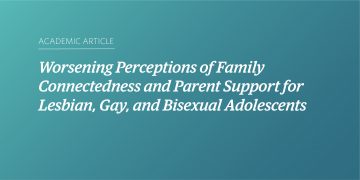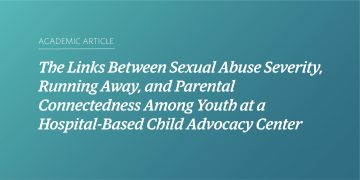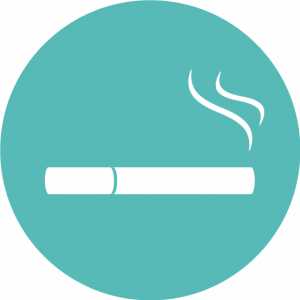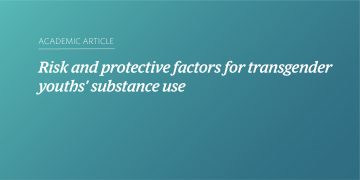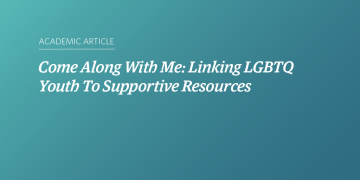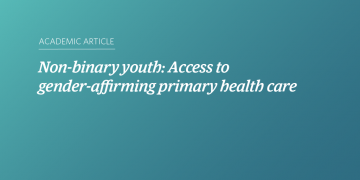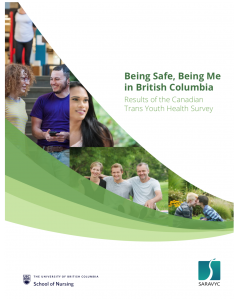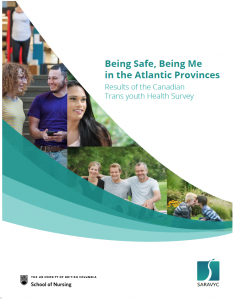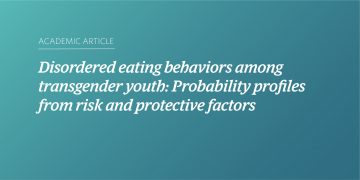Out at Home: Family Guide to Supporting Teen Sexual Orientation
Sexual orientation can be hard to talk about. Many people find it confusing and potentially complex. For many parents, it’s especially uncomfortable to talk about sexuality with their kids, but small steps go a long way. The team at SARAVYC has designed a resource for East Asian parents as part of our research in tracking […]
Worsening Perceptions of Family Connectedness and Parent Support for Lesbian, Gay, and Bisexual Adolescents
Abstract Objectives Lesbian, gay, and bisexual (LGB) adolescents often report compromised relations with their families. Given the recent changes in societal attitudes toward LGB individuals, in respect to rights for marriage and other legal statuses, we explore whether or not there has been a change in how LGB and heterosexual adolescents perceive their family relations […]
The Links Between Sexual Abuse Severity, Running Away, and Parental Connectedness Among Youth at a Hospital-Based Child Advocacy Center
Abstract Purpose Runaway adolescents often have strained relationships with their parents. Given parental support is an important protective resource for traumatized young people, understanding differences in support within parent–adolescent relationships could aid in designing more effective interventions. We hypothesized (1) runaway adolescents seen at a Child Advocacy Center (CAC) would have poorer parental relationships than […]
Supportive families and schools help prevent substance use among transgender youth
Trans youth in Canada face high levels of violence, and this can contribute to substance use. However, research at SARAVYC showed that even when transgender youth experience high levels of violence or discrimination, a supportive family and safe school can make a difference. Specifically, strong family and school connections are helping prevent transgender youth from […]
Risk and protective factors for transgender youths’ substance use
Abstract Research at the intersection of substance use and protective factors among transgender youth is scarce; emerging evidence suggests high risk for substance use for transgender youth. We analyzed data from 323 transgender youth aged 14–18 ( M age = 16.67) to investigate the extent that risk (enacted stigma) and protective factors (support from family, school, friends) […]
Come Along With Me: Linking LGBTQ Youth To Supportive Resources
Abstract In this study, we examine how lesbian, gay, bisexual, transgender, and queer (LGBTQ) youth, who tend to experience greater feelings of isolation and discrimination than heterosexual youth, find and become integrated into supportive activities and resources. As part of a larger study on supportive lesbian, gay, bisexual, transgender, and queer youth environments, 66 go-along […]
Non-binary youth: Access to gender-affirming primary health care
Abstract Background: Transgender (trans) youth who identify outside the gender binary are a growing subpopulation. In this article, we document differences in access to gender-affirming health care between binary and non-binary identified trans youth and explore ways of meeting the health needs of non-binary youth within primary care settings. Methods: The Canadian Trans Youth Health Survey is […]
Being Safe, Being Me in British Columbia: Results of the Canadian Trans Youth Health Survey
The Canadian Trans Youth Health Survey was a national online survey conducted by researchers from several Canadian universities and community organizations. The survey included somewhat different questions for younger (14-18 years) and older (19-25 years) trans youth about a wide range of life experiences and behaviours that influence young people’s health. This report is focused […]
Being Safe, Being Me in the Atlantic Provinces: Results of the Canadian Trans Youth Health Survey
The Canadian Trans Youth Health Survey was a national online survey conducted by researchers from several Canadian universities and community organizations. This report specifically examines trans youth located in the Atlantic Provinces. The survey included 122 participants from the Atlantic Provinces and used somewhat different questions for younger (14-18 years) and older (19-25 years) trans […]
Disordered eating behaviors among transgender youth: Probability profiles from risk and protective factors
Abstract Purpose Research has documented high rates of disordered eating for lesbian, gay, and bisexual youth, but prevalence and patterns of disordered eating among transgender youth remain unexplored. This is despite unique challenges faced by this group, including gender‐related body image and the use of hormones. We explore the relationship between disordered eating and risk […]
